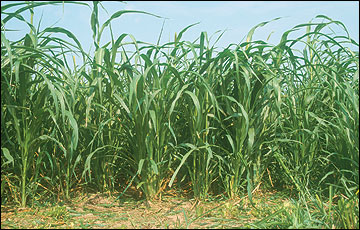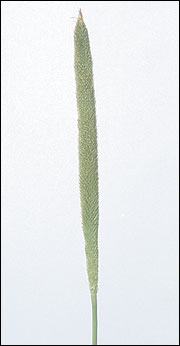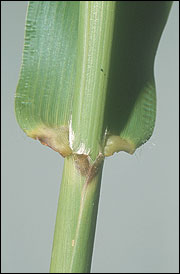Pearlmillet (Pennisetum americanum (L.) Leeke)
Warm-season grasses
Pearlmillet is an annual warm-season grass that produces most of its forage during midsummer. Other millets, such as proso, foxtail, Japanese or German, are often used in silage or hay mixtures, but they produce less forage and have a shorter grazing season than pearlmillet. Pearlmillet is an excellent choice for warm-season pasture in the Ozarks because it tolerates acidic soils and drought. Pearlmillet can produce 8,000 to 12,000 lb/acre of forage when harvested to a 6- to 10-inch stubble after accumulated growth reaches a height of 18 to 30 inches. Unlike sorghum-sudangrass, it does not contain prussic acid. It responds well to split applications of nitrogen at establishment and then again after the first grazing. Pearlmillet is a nitrate accumulator when water is lacking. It should be tested for nitrate levels before grazing during or immediately after a drought.
 Pearlmillet
Pearlmillet
 Yield distribution of pearlmillet in Missouri.
Yield distribution of pearlmillet in Missouri.
- Origin: North-central Africa
- Adaptation to Missouri: Statewide
- Growth habit: Tall, erect, annual.
- Blade: Flat, long, scabrous, and slender, with smooth to pubescent surface, prominent midrib, lanceolate.
- Sheath: Purplish, split, open and pubescent.
- Ligule: Short and pubescent.
- Auricles: Absent.
- Seed head: Compact, conical, spike-like panicle.
- Fertilization: 60–90 lb N/acre at establishment. Thereafter apply 40–60 lb N/acre after each cutting or grazing. Phosphorus and potassium to soil test.
- Timing of production: 90 percent of production occurs in June, July and August
- When to begin grazing: When it reaches 18–30 inches
- When to cut for hay: When it reaches 36 inches
- Lowest cutting or grazing height: 8 inches

